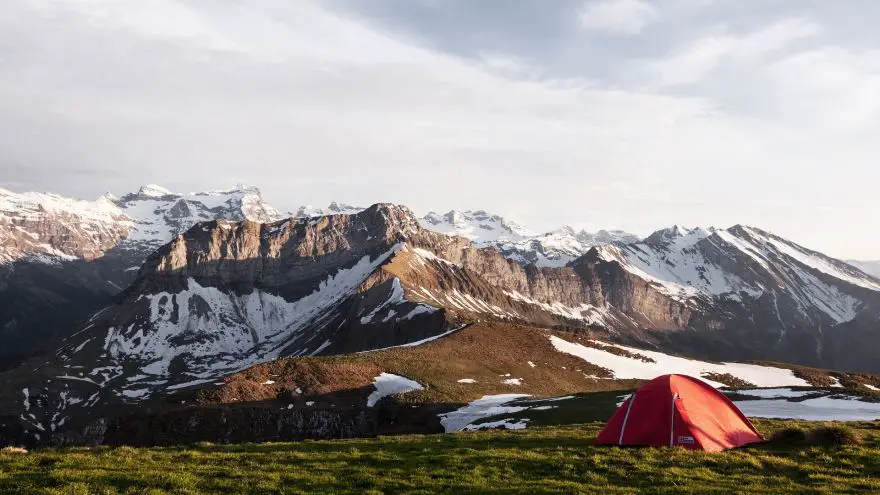The Difference Between Season Ratings For Tents
 The Difference Between Season Ratings For Tents
gearweare.net
The Difference Between Season Ratings For Tents
gearweare.net
From family trips to backpacking excursions in the Andes, knowing that your tent is suited to your needs is essential to both comfort and safety. Besides making sure that there is enough room inside for any number of people who need to sleep inside, you also need to make sure that the tent itself will sufficiently protect its occupants from whatever environment they choose to encounter. In an attempt to make this decision easier for buyers, most tents provide a season rating to indicate the sorts of precipitation and range of temperature a tent can withstand. However, these ratings are only useful if you can understand what each of them means. Some companies quibble on whether the lowest rating should be referred to as a one or a two-season rating, so I have combined them for the sake of simplicity.
Table of Contents
1 to 2 Season
A one-to-two season rating is generally given to a tent that is meant for a very specific type of weather, specifically the warm temperatures and mild precipitation associated with summer. While many do come with a rain fly, they are small—basically a dew guard—and with a thin layer of waterproof coating that won’t withstand more than a light vertical rain. This doesn’t necessarily mean that the tent will leak in a moderate rain, but it will probably be damp to the touch. The idea is to keep the user cool in hot weather, rather than to defend against extreme climates. Again, due to the nature of the expected buyer, a one season tent normally will not have the extra features like the covered antechamber for storing shoes and chairs.
Because it is not built with as much insulation, these tents are generally much less expensive due to lighter coverings and occasionally fiberglass poles. The lower price and standards are part of why this rating of tent often falls into the Family category in certain department stores: the expected buyers are the more casual kind of camper—likely with children—who don’t want to spend money on tents that they could be spending on activities. Stores might not even label the seasonality on this type of tent to avoid the confusion of the ratings for summer-only campers. If the tent you are looking is not categorized into a rating, it is almost certainly a one or two season tent, depending on the company.
3 Season
If you do want to take advantage of more weather for camping, a 3-season tent may be ideal for you. One of the most popular types of tents, these can handle the moderate rain or spring and fall, the warmth of summer, a fairly strong wind, and even a bit of snow. They are sturdier than a one or two season tent and have a good balance of ventilation and insulation, making them a great option for people who like to camp in all of the milder climes but may not want to own multiple tents.
Because they are made of sturdier materials, these tents usually fall into the moderate to more expensive range for a quality tent. Although these tents have a great deal of mesh, they also have rain flies that cover from three quarters to the whole tent. They also tend to have a little more room to stand up inside than some other tents. This can be a bit problematic if you are pitching it in a very heavy wind, but this issue is simply countered by utilizing guy lines, which are pretty standard with this tent rating. While a fairly adaptable shelter, a three-season tent is not intended for extended time in all conditions.
4 Season
If a three-season tent is so convenient, then a four season must be the most useful, right? Not necessarily. While it can be used all year as its name implies, most campers do not need that kind of protection for what they are doing. The tent is built with sturdy materials and strong poles to stand up against inclement weather and enough insulation to keep you warm.
However, all of this thorough covering requires sacrifices in other areas. A higher quality tent means a much higher price, which might not be worthwhile for someone who mainly camps in milder seasons. This tent rating also allows less air movement, which can be quite unpleasant in warmer temperatures. Because of this, some people chose to own multiple tents in order to experience optimum comfort in any climate. Others do not intend to use their tents for anything other than sleeping and so do not mind a little discomfort for a short period of time during certain times of the year.
5 Season
Also known as an expedition tent, this season rating is for the most extreme weather, though most specifically for violent cold. While very similar to the four-season in that it works in all climates, this is the next step further in insulation and the strength enough to hold up several feet of snow. The strong materials help to shield against precipitation from all angles—up, down, and sideways. Intended for extended adventures in the most unforgiving climates, it is however overkill for anywhere but the arctic and snow topped mountains. The price reflects this. A tent with this rating is not at all necessary for casual camping, but for those going to the next level of extreme outdoor activity.
In Conclusion
Although a four- or five-season tent CAN technically be used in every season, this does not mean it will be the most comfortable option. It is designed to withstand the extreme cold, which generally means it must sacrifice some ventilation, a fact that would make it almost unbearable in higher temperatures. In addition, season ratings are not the only factor to take into account when selecting a tent. For instance, if you are planning a long hiking trip for two, you might not want to have to haul a full family tent that can house nine. Or maybe you need the extra space to store all of your equipment.











